We are going to provide you with a beneficial and fruitful step by step method regarding the process in which you transplant various tomato types seedlings to a bigger pot or even garden. When gardening, the phrase "transplanting" refers to the process of transferring a plant from one location to another, often from a smaller area to a bigger place. However, there are certain exceptions to this rule. We often refer to the process of moving tomato seedlings from one container to another container of a bigger size as "repotting." When it comes to gardening, one of the most important times to perform transplanting is in the spring, when seedlings that were started inside or that were acquired from nurseries are moved outside and planted in the garden. Young plants that have been acquired via the purchase of nursery stock or from gardening centers are commonly referred to as "transplants." Why Should I Bother Transplanting Tomato Seedlings? Tomatoes need to be transplanted into bigger pots and finally planted outdoors to ensure proper growth. This is necessary since immature tomato plants outgrow their containers very fast. 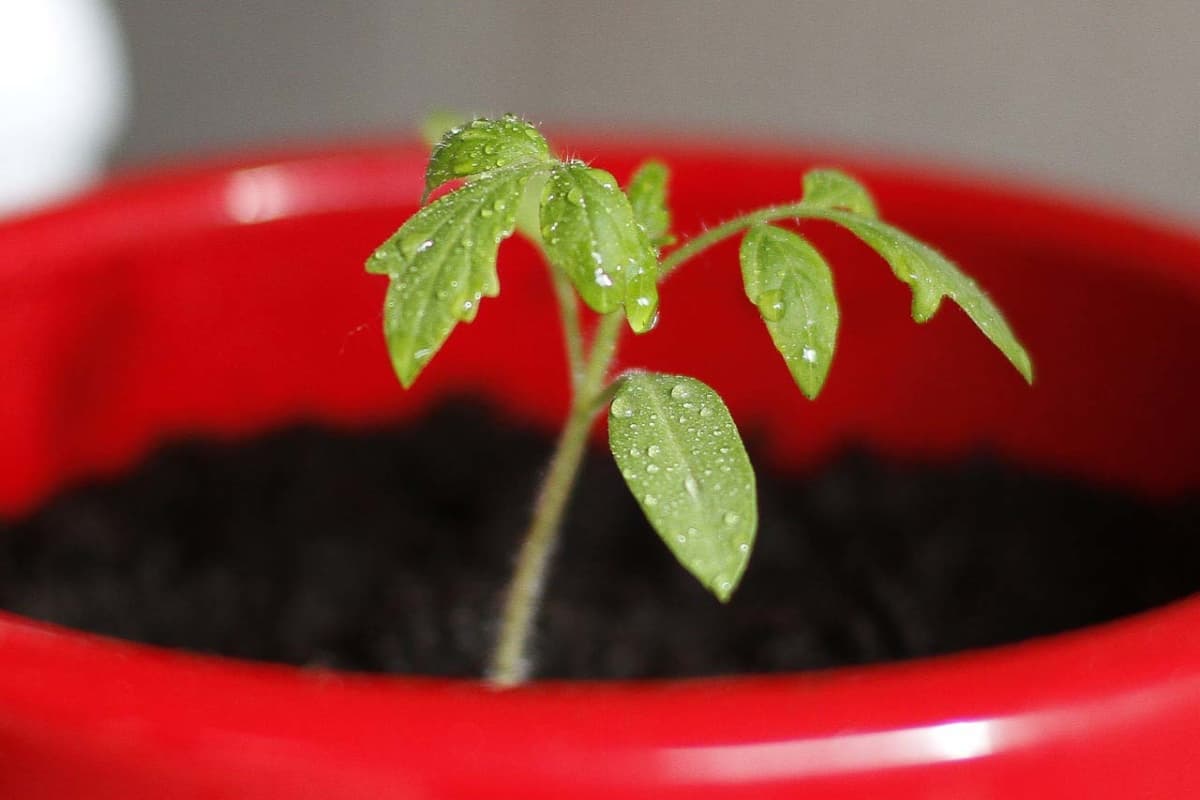 If tomatoes are allowed to remain in the same little container in which they were planted, they will quickly outgrow the space available to them, get rootbound, and most likely perish. Tomatoes may develop roots at any point along their stems, and you may have seen the little hairs that run down their stems, which give them a somewhat fuzzy texture when you run your finger over them. This indicates that the tomato plants will produce a greater number of roots each time they are transplanted and their exposed stem is buried more deeply. This results in the formation of a strong and durable subterranean root system, which will serve to both secure the plant in its current location and provide it with sustenance for the remainder of the season. When should tomatoes be moved into their permanent homes? We may divide the process of transplanting tomatoes into two primary categories: moving them into bigger pots and moving them out into the garden. There are several key differences between the two processes, despite the fact that both include comparable steps. If you decide to start your tomatoes from seed indoors, you will need to gradually upgrade the size of the container in which the tiny seedlings are housed as they continue to develop.
If tomatoes are allowed to remain in the same little container in which they were planted, they will quickly outgrow the space available to them, get rootbound, and most likely perish. Tomatoes may develop roots at any point along their stems, and you may have seen the little hairs that run down their stems, which give them a somewhat fuzzy texture when you run your finger over them. This indicates that the tomato plants will produce a greater number of roots each time they are transplanted and their exposed stem is buried more deeply. This results in the formation of a strong and durable subterranean root system, which will serve to both secure the plant in its current location and provide it with sustenance for the remainder of the season. When should tomatoes be moved into their permanent homes? We may divide the process of transplanting tomatoes into two primary categories: moving them into bigger pots and moving them out into the garden. There are several key differences between the two processes, despite the fact that both include comparable steps. If you decide to start your tomatoes from seed indoors, you will need to gradually upgrade the size of the container in which the tiny seedlings are housed as they continue to develop. 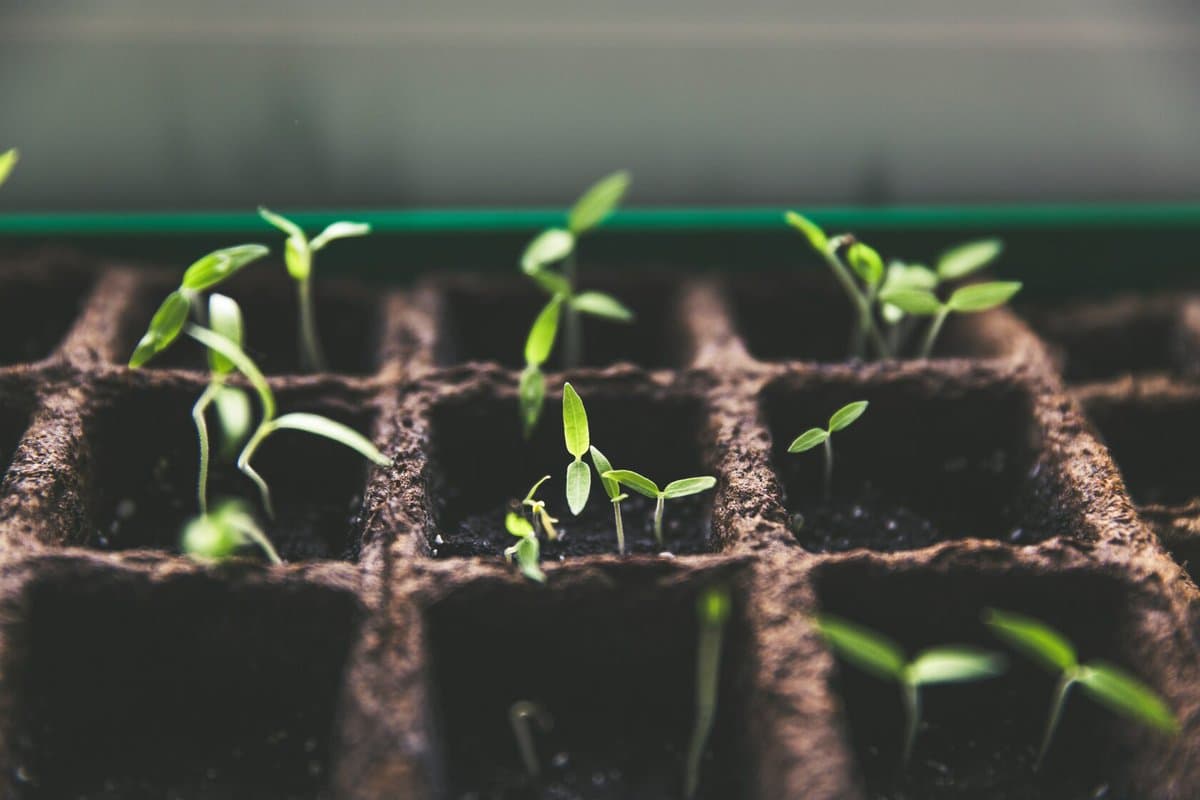 Tomatoes should be grown from seed in the early spring, about 6-8 weeks before the last frost in your location. During this time frame, it is possible that the tomato plants will need to be repotted a total of three times. Repotting young tomato plants is necessary because it encourages vigorous development and produces plants that are both healthy and robust. 2: Putting Tomato Seedlings Outside in the Garden You will need to transplant your tomato seedlings into their permanent location for the remainder of the growing season after they have reached the appropriate size (between 5 and 10 inches) and all danger of frost has passed in your region. If you got tomato seedlings from a nursery, then you will need to go through this transplanting step as well. When you should move your tomato plant from its container into the garden depends largely on the growth zone in which you live, but in general, you should make the move between April and July, when the soil temperature is at least 50 degrees Fahrenheit, and transplant your tomato plant. The process of hardening off your tomato plants, which will be discussed in greater detail in the following paragraph, must be completed before you can move on to the next stage of transplanting. This stage is also used to describe the process of planting your tomatoes into their final, large pot outside, which you will do if you are growing tomatoes in pots for the entirety of the growing season.
Tomatoes should be grown from seed in the early spring, about 6-8 weeks before the last frost in your location. During this time frame, it is possible that the tomato plants will need to be repotted a total of three times. Repotting young tomato plants is necessary because it encourages vigorous development and produces plants that are both healthy and robust. 2: Putting Tomato Seedlings Outside in the Garden You will need to transplant your tomato seedlings into their permanent location for the remainder of the growing season after they have reached the appropriate size (between 5 and 10 inches) and all danger of frost has passed in your region. If you got tomato seedlings from a nursery, then you will need to go through this transplanting step as well. When you should move your tomato plant from its container into the garden depends largely on the growth zone in which you live, but in general, you should make the move between April and July, when the soil temperature is at least 50 degrees Fahrenheit, and transplant your tomato plant. The process of hardening off your tomato plants, which will be discussed in greater detail in the following paragraph, must be completed before you can move on to the next stage of transplanting. This stage is also used to describe the process of planting your tomatoes into their final, large pot outside, which you will do if you are growing tomatoes in pots for the entirety of the growing season. 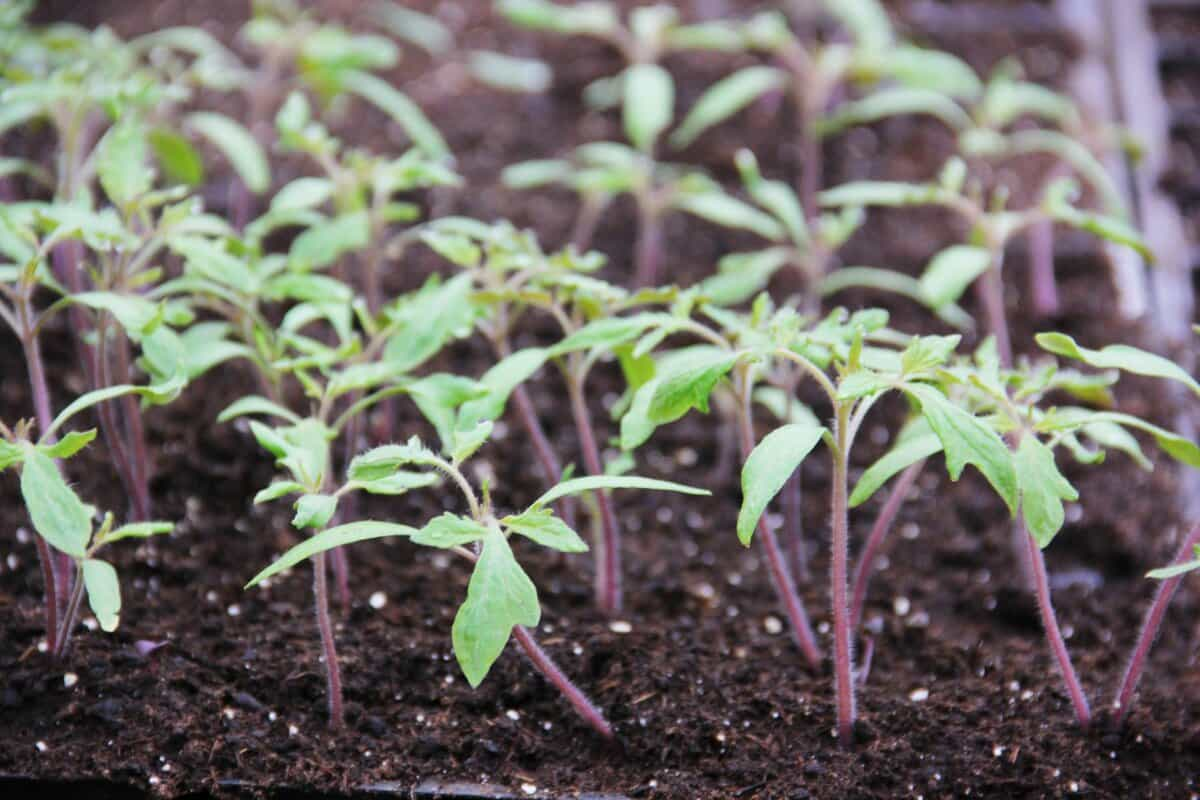 Tomato seedlings should be transplanted into a larger pot when their height is approximately two to three times that of their container and they have their second pair of leaves. This is a skill that is best learned through experience, but as a general rule, you should transplant tomato seedlings into a larger pot when their height is approximately two to three times that of their container. It is preferable to transplant tomato seedlings into individual pots earlier than necessary rather than waiting until it is too late, at which point the plant has already begun to become rootbound and the risk of root damage has increased significantly. However, make sure that you aren't way off since repotting the plant much too early would merely cause the soil to crumble and break away from the under-developed root ball when you are repotting the plant. So make sure that you aren't way wrong. It is recommended that you repot your tomato seedlings three times in the approximately two months that you will maintain them inside before you transfer them outside into the garden. If you work best within a time constraint, you may anticipate that you will need to repot your plants every three weeks; nevertheless, you should be prepared to change this timetable as necessary. Unpotting a plant is easiest if you lay your hand over the top of the dirt, poke the tomato stem between two fingers, and then turn the container upside down. This is the most effective way.
Tomato seedlings should be transplanted into a larger pot when their height is approximately two to three times that of their container and they have their second pair of leaves. This is a skill that is best learned through experience, but as a general rule, you should transplant tomato seedlings into a larger pot when their height is approximately two to three times that of their container. It is preferable to transplant tomato seedlings into individual pots earlier than necessary rather than waiting until it is too late, at which point the plant has already begun to become rootbound and the risk of root damage has increased significantly. However, make sure that you aren't way off since repotting the plant much too early would merely cause the soil to crumble and break away from the under-developed root ball when you are repotting the plant. So make sure that you aren't way wrong. It is recommended that you repot your tomato seedlings three times in the approximately two months that you will maintain them inside before you transfer them outside into the garden. If you work best within a time constraint, you may anticipate that you will need to repot your plants every three weeks; nevertheless, you should be prepared to change this timetable as necessary. Unpotting a plant is easiest if you lay your hand over the top of the dirt, poke the tomato stem between two fingers, and then turn the container upside down. This is the most effective way. 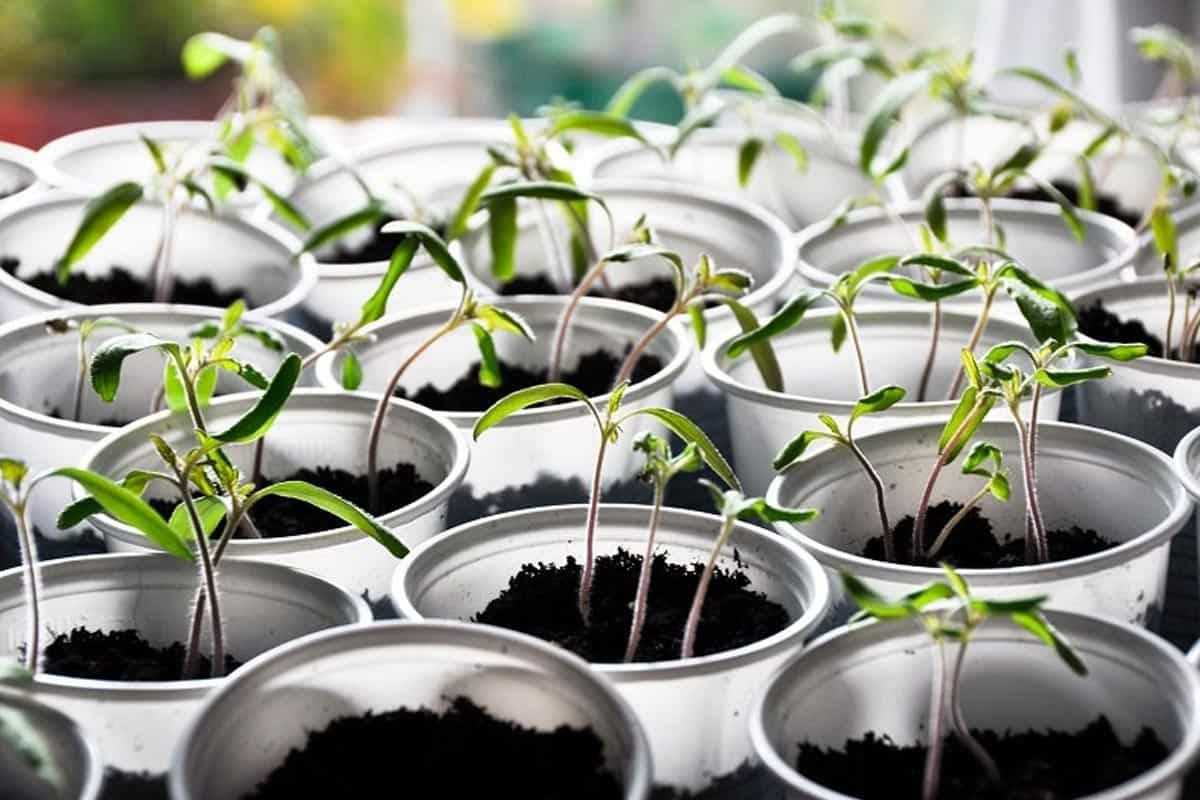 Avoid handling the stem or yanking on it, as it is a very sensitive part of the plant. You may gently massage the dirt block out by softly pressing on the bottom of the pot or along the edges of the pot. However, you must take care not to harm any of the plant's roots. Put the seedling in the new container, making sure that it is facing the correct direction. You may raise the plant by placing a little amount of dirt at the bottom of the container if the initial node of the plant is positioned too far below the edge of the container. If you want to bury as much of the stem as possible, the initial node should be positioned such that it is parallel to the top of the container. Dig a hole that is sufficiently deep so that your tomato will be buried up to the first main branch, and then remove any leaves that are attached to the stem that are located below this point. It's possible that the hole has to be almost a foot deep, but it will depend on how tall your seedlings are. When you are transplanting the plant, throw a couple of handfuls of compost made from well-rotted manure in the bottom of the hole. This will give the plant a boost. Tomatoes, in general, should be at least 18 inches apart from one another so that they have sufficient space to grow. Holes should be spaced apart according to the instructions on the seed packet or plant label of your specific variety of tomato, but the instructions on the seed packet or plant label should be followed.
Avoid handling the stem or yanking on it, as it is a very sensitive part of the plant. You may gently massage the dirt block out by softly pressing on the bottom of the pot or along the edges of the pot. However, you must take care not to harm any of the plant's roots. Put the seedling in the new container, making sure that it is facing the correct direction. You may raise the plant by placing a little amount of dirt at the bottom of the container if the initial node of the plant is positioned too far below the edge of the container. If you want to bury as much of the stem as possible, the initial node should be positioned such that it is parallel to the top of the container. Dig a hole that is sufficiently deep so that your tomato will be buried up to the first main branch, and then remove any leaves that are attached to the stem that are located below this point. It's possible that the hole has to be almost a foot deep, but it will depend on how tall your seedlings are. When you are transplanting the plant, throw a couple of handfuls of compost made from well-rotted manure in the bottom of the hole. This will give the plant a boost. Tomatoes, in general, should be at least 18 inches apart from one another so that they have sufficient space to grow. Holes should be spaced apart according to the instructions on the seed packet or plant label of your specific variety of tomato, but the instructions on the seed packet or plant label should be followed. 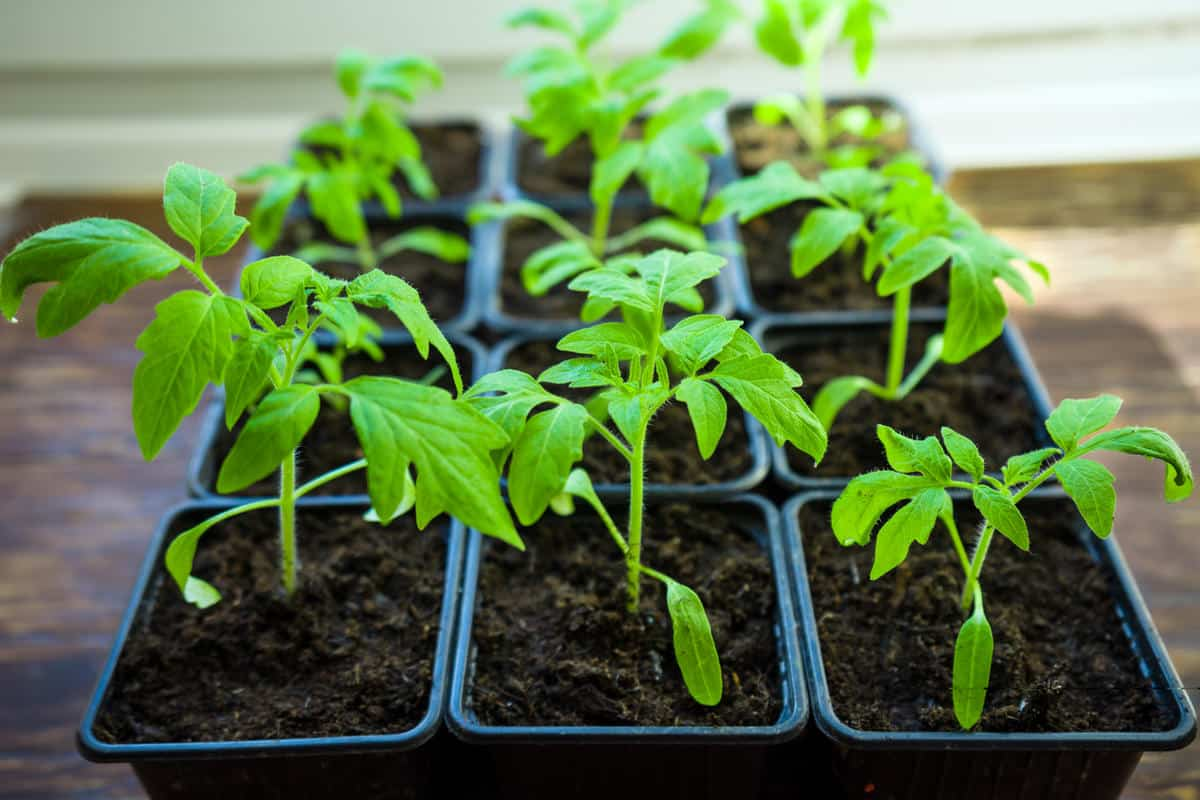 If you are growing an indeterminate tomato variety, you will absolutely need to support your plants with some type of trellising structure. This framework should be erected before planting the seedlings in order to avoid any harm to the plant's roots. Place trellises either next to the holes or above them, depending on the arrangement that you are using (hanging trellis, cages, A-frame etc). Even if you are growing an indeterminate type of plant, it is possible that you may still need to give some kind of cage or support to the plant later in the season to avoid heavy branches from breaking off. Even though it may be difficult to envision at this point, you should not underestimate how enormous your tomato plants will eventually develop.
If you are growing an indeterminate tomato variety, you will absolutely need to support your plants with some type of trellising structure. This framework should be erected before planting the seedlings in order to avoid any harm to the plant's roots. Place trellises either next to the holes or above them, depending on the arrangement that you are using (hanging trellis, cages, A-frame etc). Even if you are growing an indeterminate type of plant, it is possible that you may still need to give some kind of cage or support to the plant later in the season to avoid heavy branches from breaking off. Even though it may be difficult to envision at this point, you should not underestimate how enormous your tomato plants will eventually develop.
💰 Tenfold your income 💎
